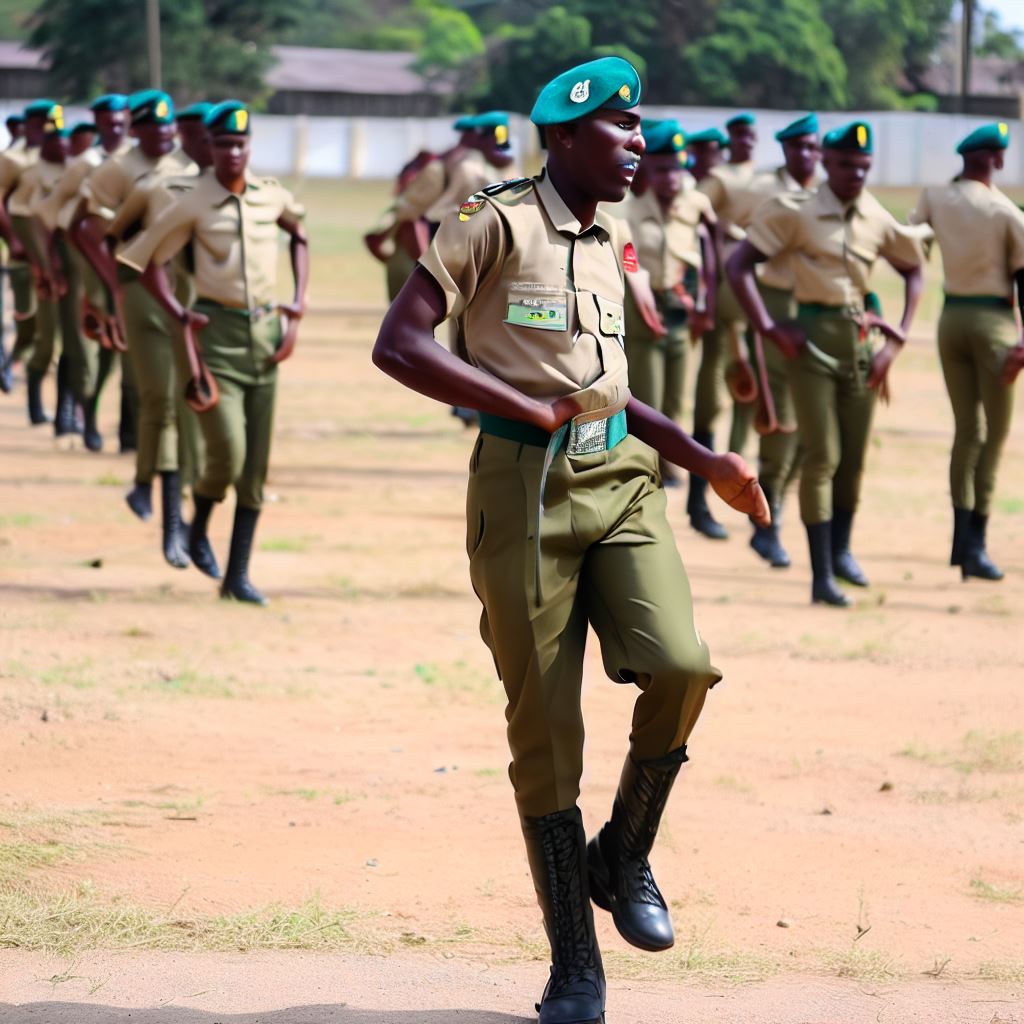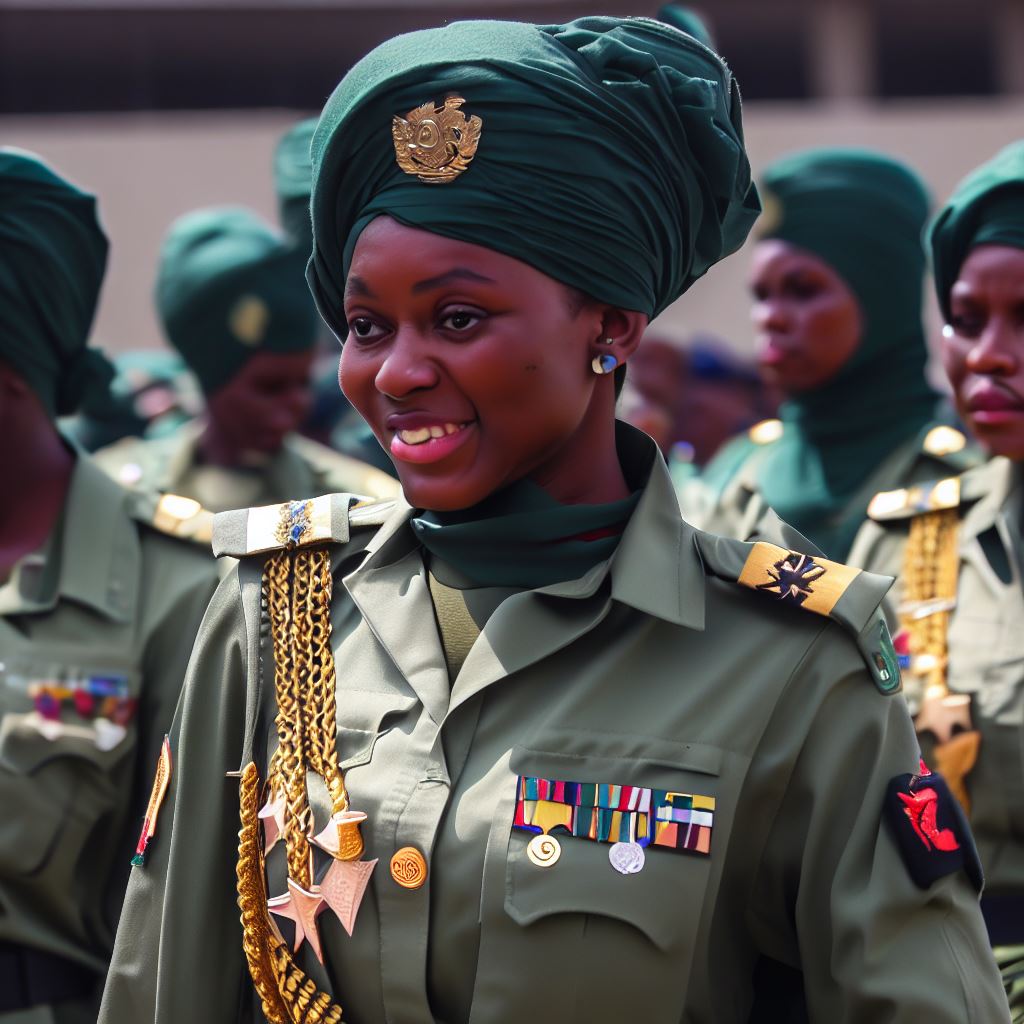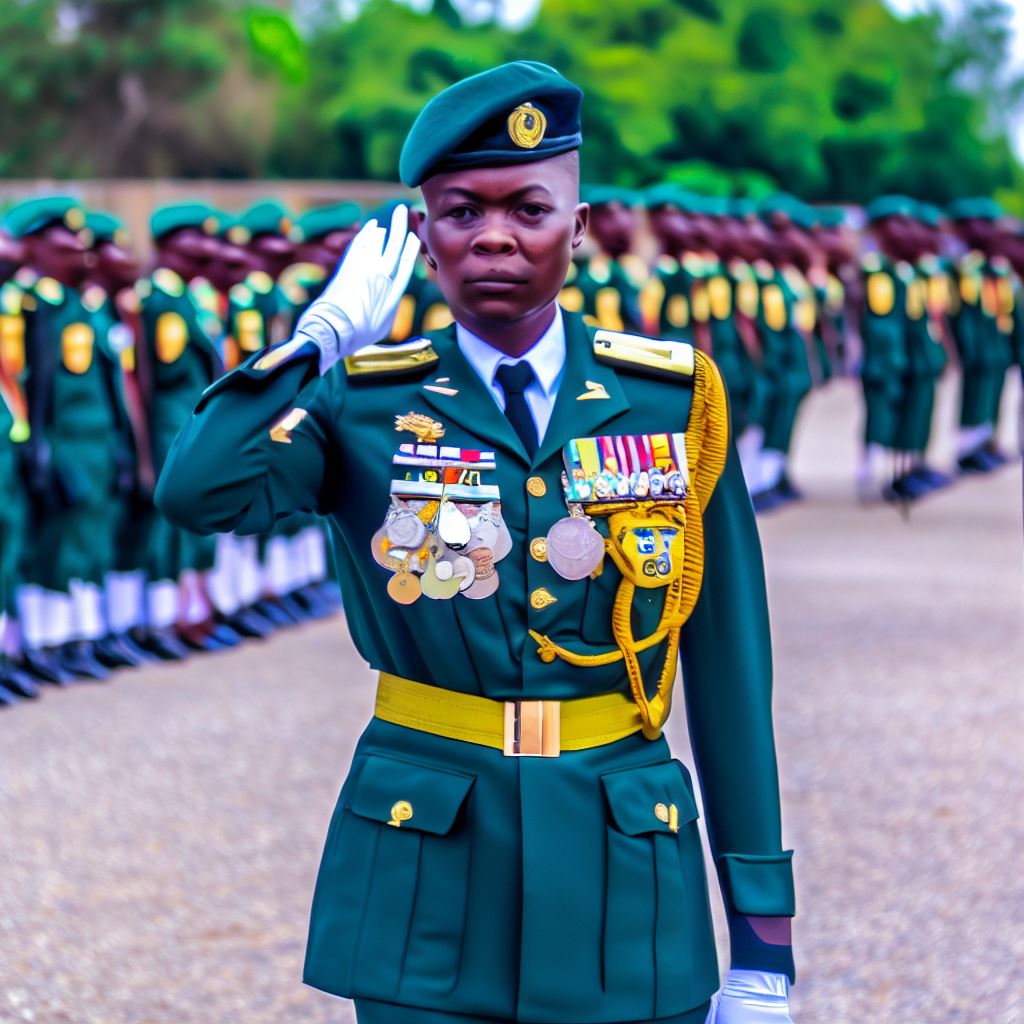So, you're here to dive deep into the world of military ranks in Nigeria, right? Whether you're a military enthusiast, a researcher, or just someone curious about how the Nigerian armed forces work, you're in the right place. The Nigerian military is one heck of an organization with a rich history and a structured ranking system that keeps everything running like clockwork. In this article, we’ll break down every aspect of military ranks in Nigeria, from the basics to the most intricate details. So, buckle up and let's get started!
Now, before we jump into the nitty-gritty, let's talk about why understanding military ranks is so important. In any military setup, ranks define authority, responsibility, and hierarchy. For Nigeria, it's not just about wearing shiny badges or fancy uniforms; it's about having a clear chain of command that ensures national security. This guide will help you understand the roles, responsibilities, and insignias associated with each rank.
Oh, and don’t worry if you’re new to all this military jargon. We’ve got your back. This article is written in plain English, with a sprinkle of casual conversation, so even if you’re not a military expert, you’ll still grasp the concepts easily. Ready? Let’s roll!
Read also:Smollett Family Father The Story Behind The Legacy
Table of Contents:
- Introduction to Military Ranks in Nigeria
- A Brief History of the Nigerian Military
- Nigerian Army Ranks
- Nigerian Navy Ranks
- Nigerian Air Force Ranks
- Rank Insignias and Their Significance
- How Promotions Work in the Nigerian Military
- Responsibilities of Each Rank
- Training and Education for Military Personnel
- Challenges Facing the Nigerian Military
- Conclusion and Final Thoughts
Introduction to Military Ranks in Nigeria
Alright, let’s kick things off by setting the stage. The Nigerian military is one of the largest in Africa, and its ranks are structured to ensure efficiency and effectiveness. Whether you’re talking about the Nigerian Army, Navy, or Air Force, each branch has its own set of ranks that define the hierarchy. These ranks are crucial for maintaining order and ensuring that everyone knows their role within the organization.
If you’ve ever wondered what it takes to climb the ranks in the Nigerian military, you’re about to find out. From enlisted personnel to commissioned officers, every rank comes with its own set of responsibilities and privileges. Understanding these ranks is key to appreciating the complexity and discipline of the Nigerian armed forces.
A Brief History of the Nigerian Military
Before we dive into the ranks themselves, it’s worth taking a quick look at the history of the Nigerian military. Established shortly after Nigeria gained independence in 1960, the military has played a vital role in shaping the nation’s history. From the Biafran War to modern-day counter-terrorism efforts, the Nigerian military has been at the forefront of national security.
Over the years, the military has evolved, adopting new technologies and strategies to meet the challenges of the 21st century. This evolution is reflected in the ranking system, which has been refined to better suit the needs of a modern military.
Nigerian Army Ranks
Let’s start with the Nigerian Army, the largest branch of the armed forces. The army’s ranking system is divided into two main categories: enlisted personnel and commissioned officers. Each category has its own set of ranks, and the transition between them is a significant milestone in a soldier’s career.
Read also:Deep Meaningful Tattoos A Journey Of Ink Art And Soul
Enlisted Personnel
Here’s a quick rundown of the enlisted ranks in the Nigerian Army:
- Private (Pte)
- Corporal (Cpl)
- Sergeant (Sgt)
- Warrant Officer Class II (WOII)
- Warrant Officer Class I (WOI)
Each of these ranks comes with its own set of duties and responsibilities. For example, a Private is typically responsible for carrying out basic military tasks, while a Warrant Officer Class I is expected to provide leadership and guidance to junior personnel.
Commissioned Officers
Now, let’s talk about the commissioned officers. These are the folks who lead the troops and make the big decisions. Here’s a list of the commissioned ranks:
- Second Lieutenant (2Lt)
- Lieutenant (Lt)
- Captain (Capt)
- Major (Maj)
- Lieutenant Colonel (Lt Col)
- Colonel (Col)
- Brigadier General (Brig Gen)
- Major General (Maj Gen)
- Lieutenant General (Lt Gen)
- General (Gen)
- Field Marshal (FM)
As you can see, the higher you go, the more responsibility you have. A General, for instance, is responsible for commanding entire divisions and making strategic decisions that affect the entire military.
Nigerian Navy Ranks
Next up, we have the Nigerian Navy. The navy’s ranking system is similar to that of the army, but with a few key differences. Let’s take a look:
Enlisted Personnel
Here are the enlisted ranks in the Nigerian Navy:
- Seaman
- Leading Seaman
- Petty Officer
- Chief Petty Officer
These ranks are responsible for maintaining the ships and ensuring that everything runs smoothly at sea.
Commissioned Officers
And here are the commissioned ranks:
- Sub-Lieutenant
- Lieutenant
- Lieutenant Commander
- Commander
- Captain
- Commodore
- Rear Admiral
- Vice Admiral
- Admiral
As you can see, the navy’s ranks are a bit more nautical in nature, with terms like "Commander" and "Admiral" that reflect the maritime tradition.
Nigerian Air Force Ranks
Finally, we have the Nigerian Air Force. The air force’s ranking system is similar to that of the other branches, but with a focus on aviation. Here’s a breakdown:
Enlisted Personnel
Here are the enlisted ranks in the Nigerian Air Force:
- Airman
- Senior Airman
- Corporal
- Sergeant
- Flight Sergeant
These ranks are responsible for maintaining the aircraft and ensuring that missions run smoothly.
Commissioned Officers
And here are the commissioned ranks:
- Pilot Officer
- Flying Officer
- Flight Lieutenant
- Squadron Leader
- Wing Commander
- Group Captain
- Air Commodore
- Air Vice Marshal
- Air Marshal
- Marshal of the Air Force
As you can see, the air force’s ranks are heavily influenced by aviation terminology, with terms like "Flight Lieutenant" and "Air Marshal" that reflect the aerial nature of the branch.
Rank Insignias and Their Significance
Now, let’s talk about insignias. Each rank in the Nigerian military has its own unique insignia, which is worn on the uniform to indicate the wearer’s position. These insignias are not just decorative; they carry a lot of meaning and history.
For example, a General’s insignia might feature stars or eagles, symbolizing leadership and strength. Similarly, a Petty Officer’s insignia might feature anchors, reflecting the naval tradition. Understanding these insignias is key to recognizing the rank of a military personnel at a glance.
How Promotions Work in the Nigerian Military
Promotions in the Nigerian military are not handed out lightly. They are based on a combination of factors, including performance, experience, and education. For enlisted personnel, promotions often come after completing certain training programs or demonstrating exceptional skill on the battlefield.
For commissioned officers, promotions are typically based on a combination of seniority and merit. Officers are expected to attend advanced training courses and gain experience in various roles before being considered for promotion.
Responsibilities of Each Rank
Every rank in the Nigerian military comes with its own set of responsibilities. For enlisted personnel, these responsibilities might include maintaining equipment, following orders, and carrying out basic military tasks. For commissioned officers, responsibilities might include leading troops, making strategic decisions, and ensuring the overall success of missions.
It’s important to note that responsibilities increase as you move up the ranks. A Private, for example, is responsible for following orders, while a General is responsible for making decisions that affect the entire military.
Training and Education for Military Personnel
Training is a crucial part of life in the Nigerian military. From basic training for new recruits to advanced courses for officers, the military offers a wide range of programs designed to prepare personnel for their roles.
Basic training typically lasts several months and covers everything from physical fitness to weapons handling. Officers, on the other hand, undergo more specialized training that focuses on leadership and strategy.
Challenges Facing the Nigerian Military
Like any military organization, the Nigerian military faces its share of challenges. From budget constraints to modernizing equipment, there’s always something to work on. One of the biggest challenges is maintaining morale and discipline in the face of ongoing conflicts and security threats.
Despite these challenges, the Nigerian military continues to adapt and evolve, ensuring that it remains a formidable force in the region.
Conclusion and Final Thoughts
And there you have it, folks—a comprehensive guide to military ranks in Nigeria. From the Nigerian Army to the Navy and Air Force, each branch has its own unique ranking system that reflects its role in national security. Understanding these ranks is key to appreciating the complexity and discipline of the Nigerian armed forces.
So, whether you’re a military enthusiast or just someone curious about how the Nigerian military works, we hope this article has provided you with the insights you were looking for. And hey, if you found this article helpful, don’t forget to share it with your friends and leave a comment below. Let’s keep the conversation going!


